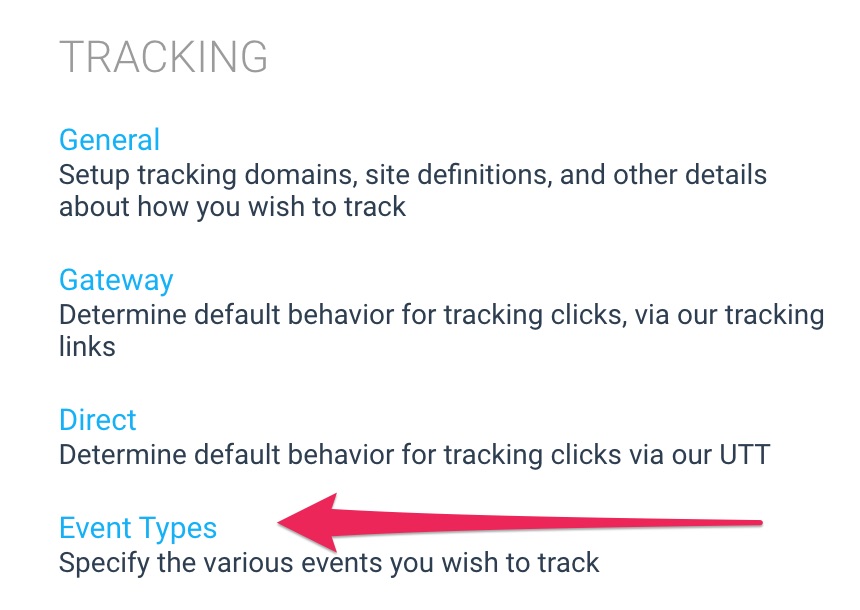Implementation
For an FTP/Email integration, there are three main steps you'll need to consider:
Capture the
im_refquery string parameter value: the exact method in which you capture and store this value is up to your discretion and specific requirements. This is a required parameter when submitting conversion data — impact.com uses this value (and others) for attribution.Create a .CSV file: impact.com provides examples and a full parameter reference for conversion data that you can customize to include the specific conversion data needed.
Submit the .CSV file: depending on your event type, you'll submit your .CSV file either via Impact FTP/FTPS/SFTP (i.e., upload a file to an impact.com FTP server), submit your .CSV file via email (i.e., sent to a specific address as an attachment that then uploads the file via FTP), or instruct impact.com to pull the file from your own FTP server.
Capture & store im_ref
im_refimpact.com will dynamically populate an im_ref value in your landing page URL (e.g. https://www.example.com/store/product1?im_ref=1234567) when visitors are directed to your site from an impact.com tracking link. The query string parameter name is im_ref.
The im_ref value should captured and stored in the browser (e.g., in a first-party cookie) and available if the same visitor returns directly to your site in another session.
If, during the customer journey, the website URL changes from one domain to another, the stored im_ref value should be passed and stored under the new domain.
Create a .CSV file
Reporting conversions at the item level is generally recommended for most circumstances. At a minimum, impact.com expects an item-level conversion data .CSV file to have the following headers:
CampaignId,ActionTrackerId,EventDate,OrderId,ClickId,CustomerId,CurrencyCode,Amount,Category,Sku,Quantity
TipIt's highly recommended to include as much data as possible – refer to the full Conversions Data Reference document for a full list of conversion data parameters.
| Parameter | Description |
|---|---|
CampaignId | A unique identifier for your impact.com account's Program (or CampaignId). Available in your Tech Plan document. |
ActionTrackerId | A unique identifier for your impact.com account's Event Type (or Action Tracker). Available in your Tech Plan document. |
EventDate | The time, date, and time zone of when the event occurred in ISO 8601 format. This value cannot be older than 88 days — impact.com doesn't process conversions with an event date older than 88 days from the date submitted. |
OrderId | The unique identifier for the order associated with this conversion. Typically generated by your site's e-commerce system. |
ClickId or im_ref | The unique identifier for the visitor that converted. Appended as a query string parameter to your site's landing page when they first visited. |
CustomerId | A unique identifier for the visitor that converted — typically an ID that your site or e-commerce system assigns to a visitor. Do not use personally identifiable information (PII). |
CurrencyCode | Three-letter ISO 4217 code for the currency used in the conversion. |
Amount | The subtotal of the item as set by the SKU. This value is pre-tax, pre-shipping, and pre-discounts. |
Category | The name of the category that the item belongs to. |
Sku | The stock-keeping unit assigned to the item. |
Quantity | The quantity of this item within the order. |
Each item within an order should be submitted as a new line in the file:
CampaignId,ActionTrackerId,EventDate,OrderId,ClickId,CustomerId,CurrencyCode,Amount,Category,Sku,Quantity
1000,4321,2021-11-23T18:00:22+00:00,01928374,QiiWXOVnrQ3SQHl24jQjyxBGUkmzfJ3i1VHrWM0,BCZ2WVSH674563PDPYOTM3AXDQ,USD,42.50,Blacksmithing,A-198237465,1
1000,4321,2021-11-23T18:00:22+00:00,01928374,QiiWXOVnrQ3SQHl24jQjyxBGUkmzfJ3i1VHrWM0,BCZ2WVSH674563PDPYOTM3AXDQ,USD,13.50,Sporting Goods,A-91827645,1
NoteFor item-level conversions, Order IDs that have multiple associated SKUs (i.e., multiple items) must be listed consecutively. Not grouping together line-items with the same Order ID and different SKUs will result in a
OID_DUPLICATEerror for the SKUs listed farther down the file.
Submit the .CSV file
Each section below covers the basics of submitting a conversion data .CSV file — to learn more, see Submit Conversion Data via FTP or Email in the impact.com Help Center.
Impact FTP
NoteYou'll need your impact.com FTP server credentials from your impact.com account.
To access your FTP credentials:
- Login to your impact.com account.
- From the left navigation menu, select Settings.
- In the Program column, under Tracking, select Event Types.
- Find the event type with a Type of "Impact FTP".
- Hover your cursor over the row of the FTP event type, select ⋯ [More] → View / Edit.
Select the View IR FTP Credentials button in the upper-right of the screen to access your credentials.
- Alternatively, you can select the pencil icon on the far right of the Tracking Method row.
- Under Upload file to system FTP Server, select Email FTP Username and Password.
- Any account user with the Admin or Implementation Specialist roles or with the Technical Settings permission should receive an email with the FTP credentials.
Use an FTP client to connect to the impact.com FTP server with the following data:
Server: ftp://batch.impact.comPort: 21Once connected, upload your file to the current directory. You won't be able to see files within the directory.
After at least 30 minutes has passed, go in the impact.com platform and in the left navigation bar, select
[Vertical Ellipsis] → Settings.In the left column, go to the Technical section and select File Submissions.
On the FTP File Submissions screen, you should see your file upload in the list.
Tipimpact.com recommends splitting FTP files to keep the maximum entries per file under 10000.
Email
NoteYou'll need the assigned impact.com email address, which is available in your Tech Plan document.
In the To field, input the unique impact.com email address assigned to your account. Do not include any other emails — impact.com only looks at the first email address.
Upload your .CSV file as a file attachment to the email.
Send the email.
After at least 30 minutes has passed, go in the impact.com platform and in the left navigation bar, select
[Vertical Ellipsis] → SettingsIn the left column, go to the Technical section and select File Submissions.
On the FTP File Submissions screen, you should see your file upload in the list.
Partner FTP
NoteYou'll need to provide impact.com with login credentials for your FTP server.
From the left navigation bar, select
[Vertical Ellipsis] → Settings.In the right column, go to the Tracking section and select Event Types.
Next to the Tracking line item, confirm that you've provided a valid Server URL, Username, Password, Port, and Directory.
Place your .CSV file in the specified directory. impact.com will pull this file from your FTP server within 24 hours.
After at least 24 hours has passed, go in the impact.com platform and in the left navigation bar, select
[Vertical Ellipsis] → Settings.In the left column, go to the Technical section and select File Submissions.
On the FTP File Submissions screen, you should see your file upload in the list.
End-to-End Testing
Once the impact.com app is fully installed, you can begin end-to-end testing to ensure everything is working properly. Learn how to proceed with End-to-End Testing.
Updated 2 months ago

